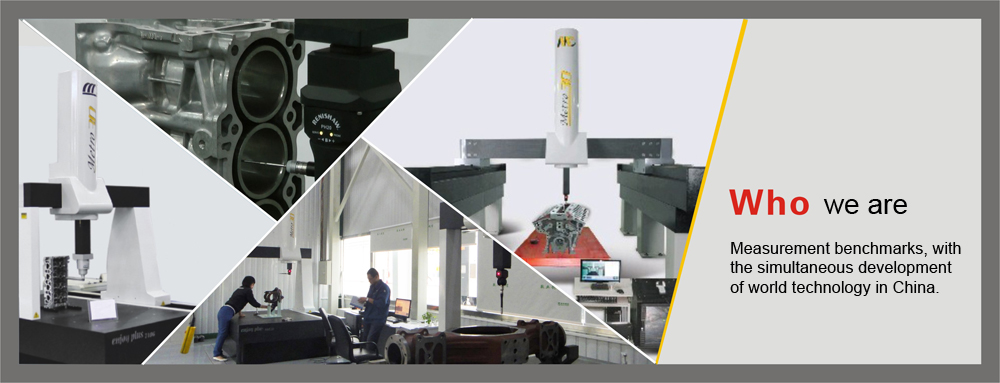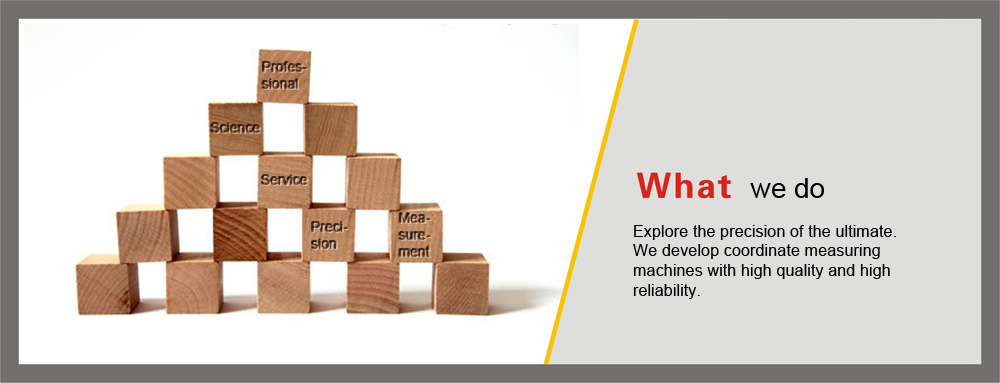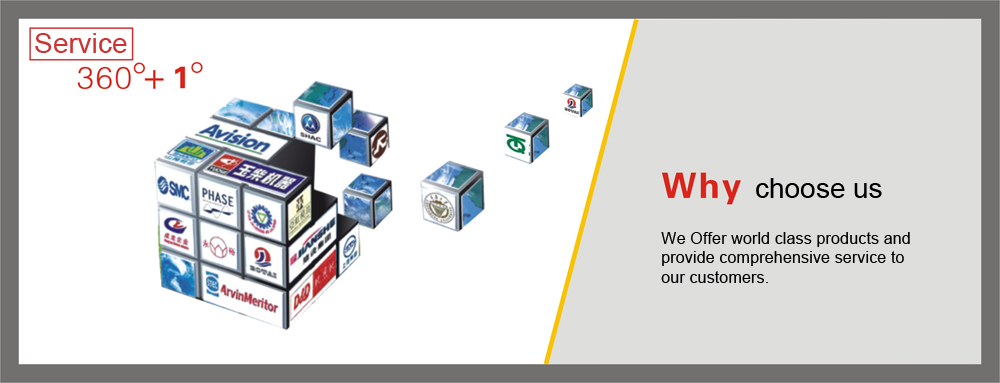
How to select proper probing system
It is difficult to select a proper probing system for the measuring task. In order to get the effective returns of investment, it is preferred that you should start from the application, flexibility and measuring scope required by the workpiece.
.jpg)
1. Probe selection:
The following points should be considered in the selection of measuring probe:
◆ Be cautious to select non-contact probe if the contact probe can be applied;
◆ Try to select the contact-trigger probe in the case of the dimensions and positions to be measured only;
◆ Try to select contact-trigger probe if the costs and relevant requirements are met;
◆ Please select the scanning probe if high precision is required for the shape and contour;
◆ The scanning probe should be able to measure the discrete points; consider the exchangeability of scanning probe and trigger probe (usually the general measuring head is used);
◆ The non-contact probe can be considered for the measurement of the easily-deformed parts, low precision parts and the parts that require large quantity of data;
◆ The compatibility of software and attached hardware should be considered (for example, measuring probe controller and cable)。
2. Applicable occasions for different probes
◆ Trigger probe: When the part measurement focuses on the dimensions, clearance and positions regardless of its shapes errors, the contact-trigger probing will be proper, especially for discrete points. The trigger probe can measure the dimensions, clearance and positions faster than the scanning probe. Because the trigger probe has small volume, when the measuring space is narrow, the measuring probe could approach the parts easily. Usually, trigger probe requires low maintenance and use costs. Hence, contact-trigger probe is still a popular component of the coordinate measuring machine.
◆ Advantages and disadvantages of trigger probe
Advantages:
1、Applicable to measurement of space box type parts and known surfaces;
2、Strong generality, low purchase and operation costs;
3、There are various trigger probes and attachments available;
4、Applicable to dimensional measuring and online application;
5、Durability;
6、small volume and easy to be applied in narrow space;
7、Because the machine is running at even, linear and low speed when measuring the points, its dynamic performance may only have slight impact on the measuring precision;
Disadvantages: low measuring and points sampling rate.
◆ Scanning probe: it is applied to the parts or contours having shape requirements: the advantage of the scanning measurement is that the data collection can be finished at high speed. These data not only can determine the sizes and positions of parts but also accurately describe the shapes, contour by use of the points. This is suitable for the measurement of the parts that have strict requirements of shape and contour. This part shape may directly affect the performance of parts (such as blade and oval piston etc.); it also can be applied when you can not make sure that the processing equipment used can produce the parts that have sufficiently good shapes and the shape errors become a big problem.
High precision measuring: since the scanning probe measures the discrete points at even speed or with constant probing force, its measuring point precision may be higher.
Meanwhile, the scanning probe may directly judge the direction of contact point. If the occasion requires strict positioning and directional measurement, the scanning probe is also superior in measuring of discrete points.
During the measurement of unknown cambered surface, i.e. digitalized occasion, the scanning probe shows its superiority: the digitalized working mode requires large quantity of points while the trigger probing is relatively slow. Due to the unknown cambered surface, the control mode for the movement of measuring machine will differ greatly. Namely, it should work in exploring way. The measuring machine will calculate the track, probing density for the next step according to the moving track.
◆ Advantages and disadvantages of the scanning probe
Advantages:
1)Applicable to the measurement of shapes and contours;
2)High probing rate;
3)High density probing ensures its good repeatability and recurrence;
4)More advanced data processing capability;
Disadvantages:
1)More complex than trigger probe;
2)Slower in the measurement of discrete points than trigger probe;
3)The dynamic error caused by acceleration in the high speed scanning will be large and can not be neglected and therefore should be compensated properly;
4)The tip wearing of the probe should be noted;
5)High prices and high use cost;
◆ Non-contact probe: the non-contact probe is applicable to the measurement of soft objects since it has no measuring force. The non-contact probe has high probing rate, which ranges from 50 times/s to 23000 times/s, and therefore applicable to the unknown cambered surface that has complex surface and does not have high requirements of precision, such as car, household wooden mould, mud mould etc. Because the non contact probe is greatly affected by the object surface characteristics such as color, smoothness, roughness and shapes etc. its indication error will be larger than contact probe. Usually, its precision is above 10 micrometers level. Additionally, the non-contact probe is expensive.
The principle to select the non-contact probe: the non contact probe can be considered for the measurement of easily deformed parts, low precision parts and the parts that require large quantities of data. Meanwhile, the compatibility of the software and attached hardware (probe controller and cable) should be considered carefull.

Address:U Valley, Liandong, 328 Chengkang Road, Chengyang District, Qingdao, China. Postcode:266100
Telephone:+86-0532-87602111 E-mail: info@metro-3d.com 鲁ICP备14028182号-2



















































